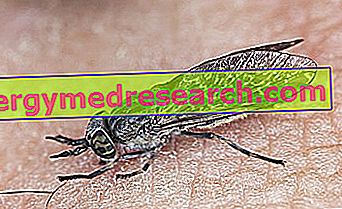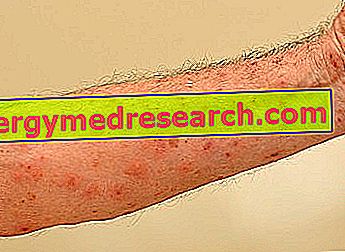Definition Parainfluenza syndromes are diseases of various types that can be caused by about 250 different viruses. In most cases, the pathogens responsible are paramyxoviruses, but adenoviruses or enteroviruses can also occur. Parainfluenza viruses can cause manifestations of different severity; the most common syndromes are respiratory (from the common cold to flu-like illnesses and pneumonia) and gastro-intestinal
Category infectious diseases
Scroll down the page to read the summary table on the fourth illness FOURTH DISEASE Exanthemic pathology typical of the pediatric age: it is a contagious skin infection characterized by the appearance of reddish spots and eruptions on the skin FOURTH DISEASE: SYNONYMS Known as scarlattinetta: symptomatology very similar to that of scarlet fever (although the symptoms are much milder) Also known as "Dukes' Disease", by the doctor who first described the pathology around 1900 FOURTH DISEASE: CAUSES The main cause has not yet been identified Assumptions: a bacterium belonging to the
Scarlattinetta The fourth disease is one of the typical exanthemic diseases of the pediatric age; these are contagious skin infections, characterized by the appearance of reddish spots and eruptions on the skin. The fourth disease is also known by other names: "Scarlattinetta", because the symptomatological picture is very similar to that of scarlet fever (although the symptoms appear much milder): "Dukes' disease", by the doctor who first described the pathology around 1900
Scroll down the page to read the summary table on the fifth disease Fifth disease Contagious viral pathology, typical of school-age children: it is an erythematous form with an acute course, triggered by parvovirus B19. It is reputed to be the fifth disease that affects children during childhood. Synonyms of the fifth disease Infectious erythema and epidemic megaloeritema , most commonly slapped cheek disease Fifth disease: incidence index Spread of the fifth disease : worldwide Period of greatest diffusion : at the beginning of spring and during the late winter Target : it mainly affects child
Generality Horsefly stings cause pain and discomfort and, in some cases, can transmit pathogens of various kinds. Horseflies are insects belonging to the large group of ectoparasites and are active especially in the warm months. In detail, horsefly stings come from female specimens, because they are hematophagous
Generality Flea bites worry not so much about the pain and itching they cause, but about the potential diseases that these insects can transmit. Fleas, in fact, are temporary hematophagous ectoparasites , or particular types of parasites that live on the outer surface of the host feeding on its blood
Generality The bites of mites can cause intense itching and discomfort, but what most worries are the pathologies that can derive from it. In fact, in some cases mite infestations can give rise to real diseases (eg scabies, demodicosis); while in other cases the mites can act as vectors for pathogenic microorganisms capable of triggering infectious pathologies in the hosts (eg leprosy, tropical typhus)
Generality The fifth disease - also known as infectious erythema or epidemic megaloeritema - is an acute infectious disease triggered by Parvovirus B19. Particularly contagious and typical of children of elementary school age, the fifth disease is responsible for a characteristic erythema on the arms, legs and cheeks, as well as more unspecific symptoms, such as headache, sense of fatigue, mild fever (low-grade fever), mal of throat and nausea
Generality Strengthening the immune system is a need to provide when they are compromised or weakened by factors such as stress, certain pathologies, excessive use of antibiotics, cold, change of season, improper nutrition, inadequate night rest, etc. . In these situations, the poor effectiveness of the immune army leads to greater susceptibility to infections (diseases triggered by infectious agents such as bacteria, viruses, fungi and parasites)
Retrovirus and cancer The retroviruses fall into the list of pathogens potentially involved in the triggering of neoplastic forms: these viruses have gained a prestigious role in the research on cancer genetics in humans. For many years now, retroviruses have been at the center of scientific attention, as many of them are considered full-fledged oncogenic viruses
Scroll down the page to read the summary table on the sixth disease Sixth disease Infectious-viral pathology with benign course that affects infants aged between six months and two years Synonyms Critical exanthema , pseudorosolia , exanthematous fever of the three days , exantema subitum or rosolea infantum Frequency of the sixth disease The sixth disease is particularly frequent in certain periods of the year, especially during the intermediate seasons (autumn and spring) Virus transmission Aerogen: through direct contact with saliva or with the mucus of the infected patient Causes of the six









